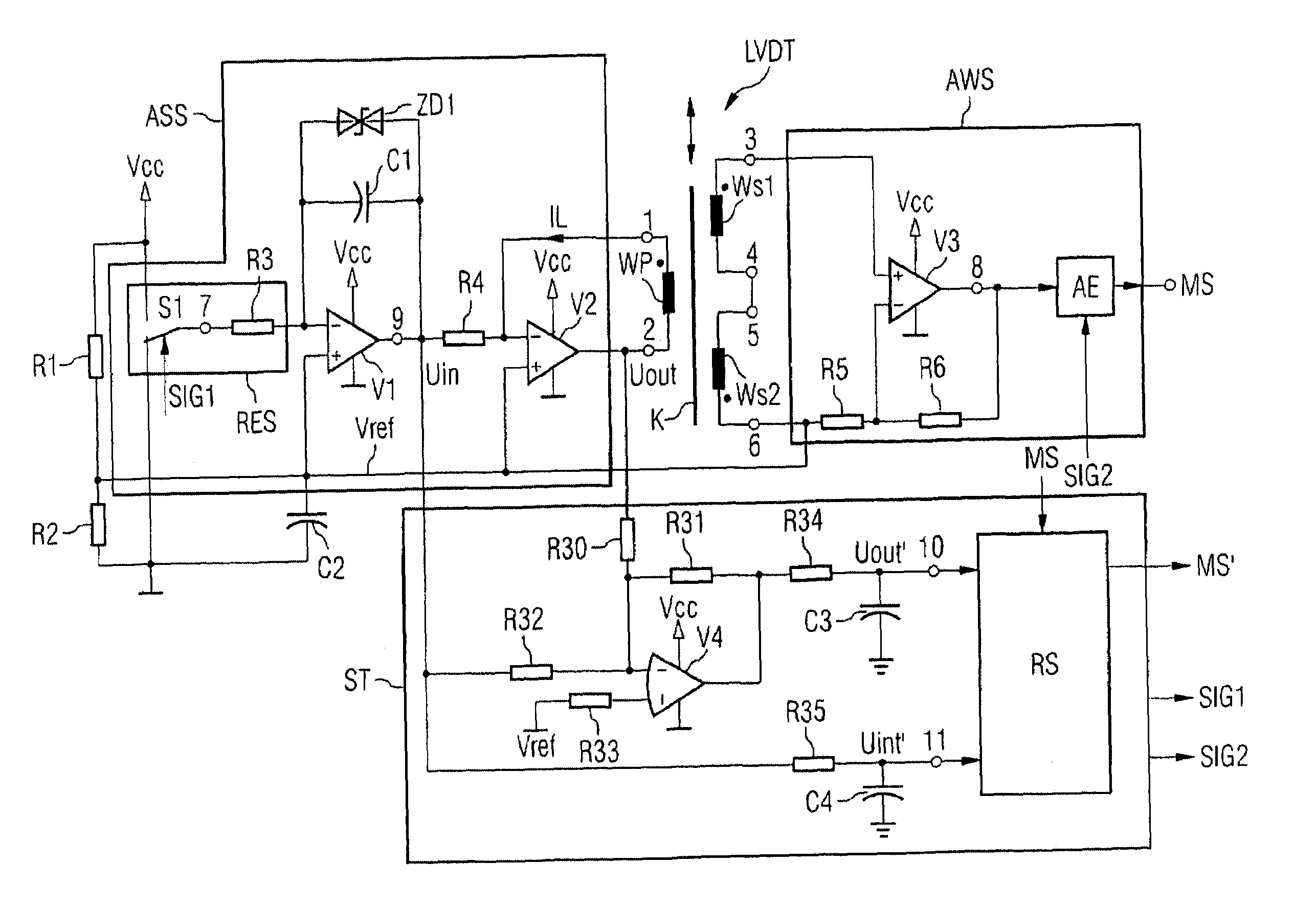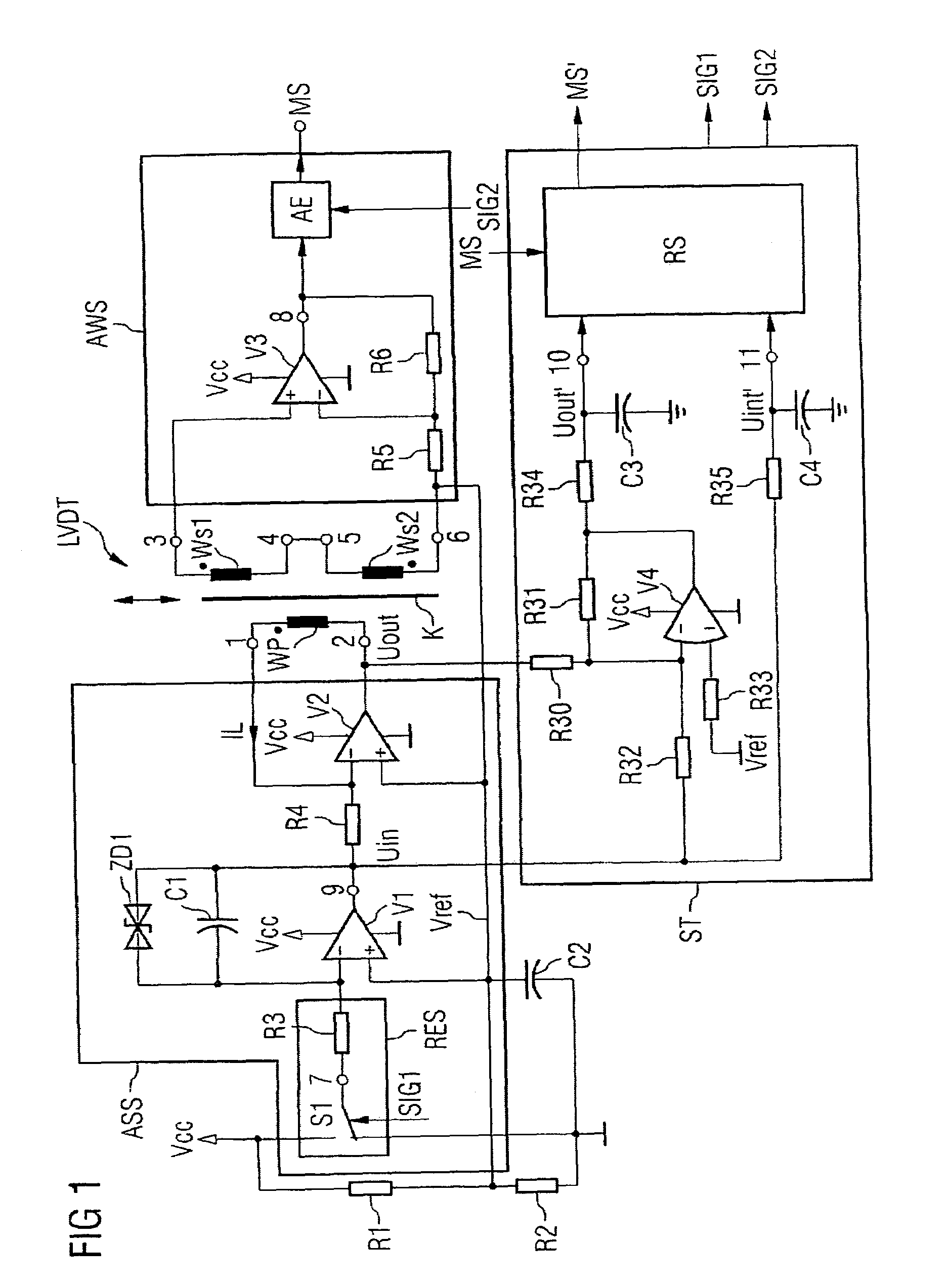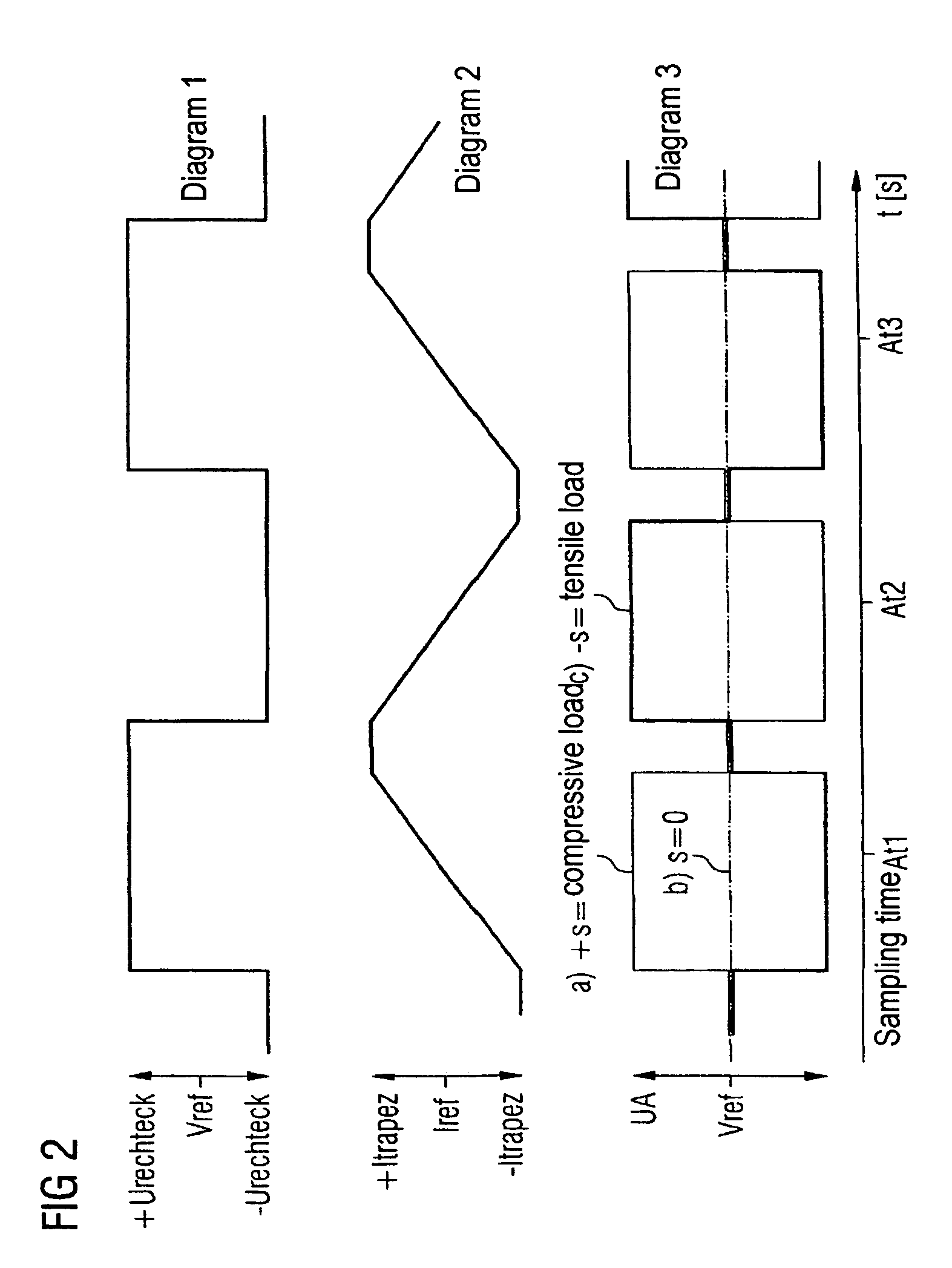Circuit arrangement with a linear variable differential transformer (LVDT) as a displacement sensor or force sensor
a technology of linear variable differential transformer and displacement sensor, which is applied in the direction of movable seats, process and machine control, instruments, etc., can solve the problems of inability to use measurement principle, increase the cost of materials, so as to achieve the effect of double the sensitivity of measuremen
- Summary
- Abstract
- Description
- Claims
- Application Information
AI Technical Summary
Benefits of technology
Problems solved by technology
Method used
Image
Examples
Embodiment Construction
[0034]FIG. 1 shows a linear variable differential transformer (LVDT), which is formed with a primary coil Wp and two secondary coils Ws1, Ws2. The primary coil Wp is magnetically coupled to the secondary coils Ws1, Ws2 via a core K. The secondary coils Ws1, Ws2 are connected in series such that the difference between the voltages at the individual secondary coils Ws1 and Ws2 can be picked up at the free ports 3 and 6. The core K is moveable and, for the preferred application field, may be coupled with a driver's seat using a method that is not illustrated, so that—in the event of a compressive or tensile load on the seat—the core may move accordingly between the coils of the linear variable differential transformer (LVDT). If the core K is located in a position midway between the two secondary coils Ws1, Ws2, the voltage that may be picked up at ports 3 and 6 is equal to 0.
[0035]The primary coil Wp is triggered at its ports 1, 2 by a selection circuit ASS with a current IL with trap...
PUM
| Property | Measurement | Unit |
|---|---|---|
| temperature | aaaaa | aaaaa |
| temperature | aaaaa | aaaaa |
| temperature | aaaaa | aaaaa |
Abstract
Description
Claims
Application Information
 Login to View More
Login to View More - R&D
- Intellectual Property
- Life Sciences
- Materials
- Tech Scout
- Unparalleled Data Quality
- Higher Quality Content
- 60% Fewer Hallucinations
Browse by: Latest US Patents, China's latest patents, Technical Efficacy Thesaurus, Application Domain, Technology Topic, Popular Technical Reports.
© 2025 PatSnap. All rights reserved.Legal|Privacy policy|Modern Slavery Act Transparency Statement|Sitemap|About US| Contact US: help@patsnap.com



